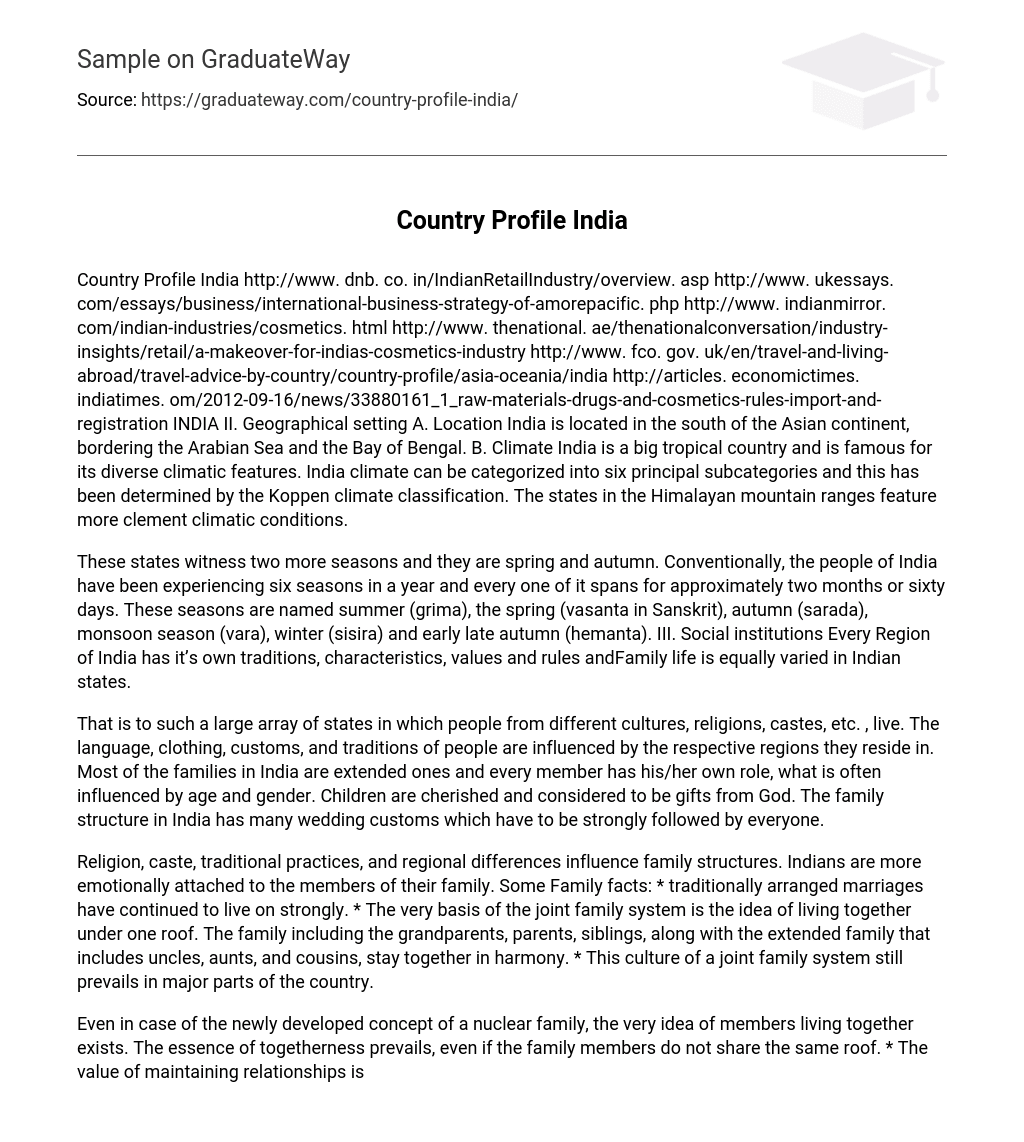Geographical setting
Location India is located in the south of the Asian continent, bordering the Arabian Sea and the Bay of Bengal. Climate India is a big tropical country and is famous for its diverse climatic features. India climate can be categorized into six principal subcategories and this has been determined by the Koppen climate classification. The states in the Himalayan mountain ranges feature more clement climatic conditions.
These states witness two more seasons and they are spring and autumn. Conventionally, the people of India have been experiencing six seasons in a year and every one of it spans for approximately two months or sixty days. These seasons are named summer (grima), the spring (vasanta in Sanskrit), autumn (sarada), monsoon season (vara), winter (sisira) and early late autumn (hemanta).
Social institutions
Every Region of India has it’s own traditions, characteristics, values and rules andFamily life is equally varied in Indian states. That is to such a large array of states in which people from different cultures, religions, castes, etc. , live. The language, clothing, customs, and traditions of people are influenced by the respective regions they reside in. Most of the families in India are extended ones and every member has his/her own role, what is often influenced by age and gender. Children are cherished and considered to be gifts from God. The family structure in India has many wedding customs which have to be strongly followed by everyone.
Religion, caste, traditional practices, and regional differences influence family structures. Indians are more emotionally attached to the members of their family.
Some Family facts:
- traditionally arranged marriages have continued to live on strongly.
- The very basis of the joint family system is the idea of living together under one roof. The family including the grandparents, parents, siblings, along with the extended family that includes uncles, aunts, and cousins, stay together in harmony.
- This culture of a joint family system still prevails in major parts of the country. Even in case of the newly developed concept of a nuclear family, the very idea of members living together exists. The essence of togetherness prevails, even if the family members do not share the same roof.
- The value of maintaining relationships is taught at a very young age. Relationships are valued and treasured a lot.
- Traditionally sons of the family have a share in their paternal property but under new law even daughters have a share in their parent’s property.
- aged members of the family are duly respected by the younger ones.
However, today Nowadays, traditional roles are changing, especially in urban areas. There are important values shared and followed by most Indian families. But today’s young generation who is into the modern age, don’t seem to like the traditions and family practices that have been followed by their families for decades. They are more inclined towards western culture and lifestyle. Indians generally hold family progress, unity and support, in high regard throughout their lives. Lately, more and more people are opting for ‘live-in’ relationships, a concept that is borrowed from the West. Men vs woman.
Men still hold the dominance in the gender roles in india but Modern India witnessed some developments in the status of women: Women are given freedom and rights such as freedom of expression and equality, as well as right to get education. Women in Contemporary India are doing the same what a male can do. But still problems like dowry, female infanticide, sex selective abortions, health, domestic violence, are prevalent in the society. Several acts have been passed to demolish all these problems. But illiteracy and lack of awareness are the obstacles in the path of Indian women to stand against these problems.





